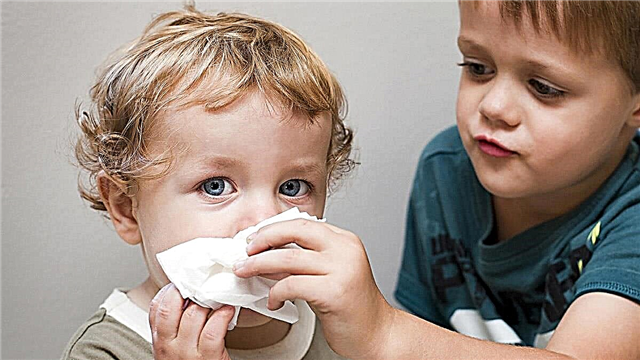Parents from the first days of a baby's life are trying to create the best conditions for him to sleep, for this they take into account even the little things. In particular, they are interested in whether a baby can sleep on its side.

The baby sleeps on its side
Conditions for quality sleep
The baby's sleep should not last less than the norm requires. Parents should adhere to certain rules so that their newborn baby sleeps soundly and does not suffer from sleep deficit:
- A clear schedule must be followed. We must not forget that the child should sleep during the day.
Note! Going to bed late interferes with the quality of the night's rest.
- Before laying the baby down, so-called rituals are very important - repetitive actions to help him fall asleep. It can be a warm bath, light massage, lullaby singing.
- If possible, the baby's crib should be located in a different room than the one played with. The room should be quiet, comfortable and ventilated. Children react very poorly to external stimuli such as bright light and noise. They shouldn't be in the children's room at all.
- The comfort of a night's rest depends on the temperature. The optimal reading of a thermometer in a children's room is from 20 to 22 degrees. At night, they are allowed to decrease to 18 degrees. Air humidity should be within 60%.
- There should be no electronic devices in the room where the baby sleeps.
- The room should have a pleasant twilight.
- To get a good night's sleep, the child must be active enough during the day, otherwise he will not be able to fall asleep. The younger the child, the less time it takes for him to accumulate fatigue while awake.
- Family fights and scandals negatively affect the quality of sleep. The kid does not fall asleep well in those families where constant emotional stress reigns.
- Children sleep much better when they feel love from their parents. It helps them to relax and sleep well during the night.
- The baby does not need to be placed in the crib immediately after feeding. Before going to bed, it must be held upright for several minutes. This will allow the child to regurgitate excess air.
- The baby doesn't need a pillow. He also shouldn't have diapers under his head.

Newborn sleeping without a pillow
- You should not swaddle a baby. A child wrapped in cloth does not feel his limbs. In addition, swaddling disrupts normal blood circulation, leading to discomfort. The best clothing for a toddler is a jumpsuit.
Note! The rising of the baby at night is absolutely normal, even at the age of six months. By the age of one, he can sleep normally all night without waking up.
When the baby sleeps on its side
Typically, babies sleep on their backs. At the same time, their palms are slightly gathered into a fist, the legs are bent at the knees and divorced, the head is turned to the side. However, a small child can sleep on its side.
Laying the baby in this position should be from the age of three months. Do not forget to put a roll of rolled towels under the back. When the baby lies on its side, he draws his legs to the stomach to drain intestinal gases. It is advisable to additionally wear scratches.

Sleep on your side
Attention! When the baby begins to sleep on its side, it is necessary to regularly change the position of his body so that torticollis does not develop.
You cannot lay the baby on its side until 3 months of age. In this position, the child can roll over on his tummy. A sleeping one month old or two month old baby does not know how to raise his head and turn over. In addition, a sleeping baby can bury his nose or mouth in a pillow, blanket or sheet and suffocate.
Can you sleep on your side
Physiologically, a child can sleep in any position. He intuitively selects the one that works best for him. However, a newborn baby will sleep in the position that the parents chose for him - he is too small to roll over, and the need for sleep is large enough.
The position on the side is safe enough for the baby if the parents are sure that he will not be able to turn on his own. To protect the baby from this, you should lay it on a "half roll". A rolled towel or thin blanket is placed under the back.
Lying on its side, the child sometimes draws his legs to his stomach. This position should not be feared - this way intestinal gases go away much better, and thereby relieves the condition with colic.
Up to six months old, the baby can be gently flipped from one side to the other. This will contribute to the harmonious development of the musculoskeletal system. You should not leave the crumb for a long time only on one side.
Growing up, children gradually learn to roll over in the crib on their own. By the age of ten months, the child himself finds the most comfortable position for rest: on his side, stomach or back.
Attention! When resting during the day, change sides during each bed.
Possible benefits and harms
According to doctors, sleeping on your side is one of the best options. Then the child will not suffer from intestinal colic. In case of vomiting, there is no risk of choking. The position, lying on the left side, greatly relieves the baby's condition with colic.
It is useful to put those children in a position on their side who have problems with digestion, often spit up. Children who suffer from intestinal colic also feel great on their side. In this position, the legs are pressed against the stomach, and gases easily pass out of the intestines.
The potential harm of sleeping on your baby's side up to four months is that his hands are near his head, and he can scratch himself. To prevent this from happening, you should put scratches on the cams.
It is forbidden to lay the child on its side with dysplasia of the hip joints. In this case, the load on them increases significantly. The sideways position can also be dangerous for premature babies.
Sleep positions
Children can sleep in other positions:
- Sleeping on the stomach creates a sense of security for the infant. It strengthens the muscles of the neck and back, improves the normal blood supply to the brain, and prevents the development of hip dysplasia. This position activates the digestive system, contributes to the normal digestion of breast milk. Such sleep should not be allowed until the baby reaches three months of age. Even during the fourth month, this position should not be abused.

Sleep on your stomach
- Sleeping on your back is the safest and most beneficial. At the same time, the head turns in the most convenient direction, the baby will not be able to throw it back. In this position, the limbs move freely, the airways are not squeezed. Sometimes children can move erratically, which is normal.
- The half-side position is also natural and beneficial for the newborn. It promotes efficient passage of intestinal gases.
- Sleeping in a fetal position is natural for an infant from one week to one month old. After this age, you should not lay the baby in this way. The pose disrupts normal blood circulation.
Note! If the baby independently assumes the position of the embryo, this indicates an increased muscle tone. Sometimes he can throw his head back. This indicates the development of dangerous diseases.
- The position of the head above the body is not suitable for babies to sleep, either day or night. In children, the skull can be deformed, the spine can be bent, and colic can occur. Sometimes such a dream ends with sudden infant death syndrome.

Baby sound sleep
The quality of the baby's sleep depends on the position chosen. If the baby sleeps on its side, this is normal. However, parents should put the baby in other positions in order to promote the harmonious development of the musculoskeletal system.



